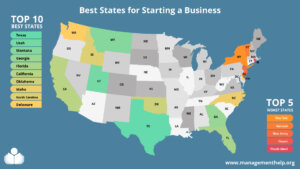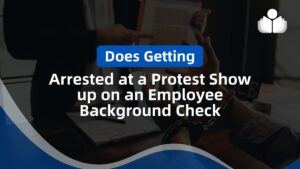© Copyright Carter
McNamara, MBA, PhD, Authenticity Consulting, LLC.
Sections of This Topic Include
Current Chief Executive’s Notification to Board (if
the current CEO is leaving)
Need for Confidentiality in Hiring a New Chief Executive
Board Preparation for Hiring a New Chief Executive
Administrative Preparation for Hiring a New Chief
Executive
Interim Coordination Between Board and Staff
Hiring the New Chief Executive
Orienting the New Chief Executive
Additional Perspectives on Hiring
or Transitioning to a New Chief Executive
Also, consider
Related Library Topics
How to Do Succession
Planning
Learn More in the Library’s Blogs Related to Hiring and New Chief Executive
In addition to the articles on this current page, see the following blogs which
have posts related to hiring new CEO – Chief Executive. Scan down the blog’s page
to see various posts. Also, see the section “Recent Blog Posts” in the sidebar
of the blog or click on “Next” near the bottom of a post in the blog.
Library’s Boards
of Directors Blog
Library’s
Nonprofit Capacity Building Blog
This procedure can be used to guide an organization through the
hiring or transition to a new chief executive. The procedure addresses
most of the major considerations during the transition, but there
will certainly be unique items that will come. The procedure should
be carefully reviewed by the relevant board members and current
chief executive (if one exists) to ensure it is complete for their
needs. (Note that this list is very useful as a risk management
mechanism, e.g., for contingency planning, for review by an organization
even if the chief executive is not leaving.) If the current chief
executive is being fired, this procedure should be modified accordingly.
This document contains the following sections.
Current Chief Executive’s Notification to Board (in
the case that the current CEO is leaving)
Confidentiality
Board Preparation
Administrative Preparation
Interim Coordination Between Board and Staff
Hiring the New Chief Executive
Orienting the New Chief Executive
Current Chief Executive’s Notification to Board (if the current CEO is
leaving)
1. Typically, the chief
The executive will notify the board chair or other board members.
The chair should immediately notify the rest
of the board members in the next board meeting.
2. Attempt to negotiate a four-week notice period from the
chief executive. It’s not unlikely that there will be
a period without a new chief executive. This procedure will help
guide you through that period.
Need for Confidentiality in Hiring a New Chief Executive
1. The board members should be apprised as soon
as possible. Occasionally,
members believe that transitions should be handled so cautiously
that even some board members should not hear about the transition.
This is the wrong approach. Each board member is legally responsible
for the leadership of the organization, and deserves to know about
all matters when they occur.
2. Discuss how to handle public relations. The community
will soon hear the chief executive is leaving. Agree on how this
message will be conveyed to the community. If the transition is
expected to take over a month (they often do), consider sending
a letter to the major stakeholders (funders (nonprofit only),
advisors, suppliers, “peer” organizations, etc.) notifying
them of the transition and assuring them that transition planning
is being carried out thoroughly. Ask them to contact the board
chair if they have any concerns or questions.
3. Note that applicants to the chief executive role deserve
complete confidentiality. Make every effort not to expose
applicants’ names to the public or staff. If certain staff are
selected to interview the candidates, they should be coached to
not reveal candidate names to the rest of the staff. This confidentiality
is not a matter of secrecy to be manipulated, rather it is a matter
of protecting candidates who may not want their names out in public
as looking for a new job. Of course, this matter of confidentiality
is ultimately up to the board, but if confidentiality is not assured,
it is very likely that the number of candidates will be quite
limited.
Board Preparation for Hiring a New Chief Executive
1. Appoint an ad hoc
transition board committee to focus on this transition –
This committee will manage the transition and make recommendations
to the entire board regarding any matters with the transition.
This committee role could be assumed by the current Executive
Committee or a Personnel Committee. Committee members should commit
to availability over the next four to eight weeks.
2. This transition planning procedure should promptly be
reviewed and updated to constitute the transition planning
document.
3. As soon as the transition plan is complete, the staff should
promptly be notified of the transition. A board member
should attend the staff meeting where notification is given and
the staff should be assured that the transition is being planned
and carried out. The plan might be reviewed in the staff meeting.
A copy of the transition plan should be shared with all staff
members.
4. Identify funding for the transition (nonprofit
only. For example, are any funds needed for a national
search, to move the new candidate, for training the new candidate,
will any consultants be needed, etc.?
5. Update the chief executive job description. The
description will be referenced to write the ad for the position,
during interviewing and for ongoing guidance to the new chief executive,
and to ensure adequate compensation. When updating the job description,
consider current overall responsibilities, strategic planning
goals for the year, and the nature of current major issues that
need to be addressed. Identify the most important criteria for
selecting the new person and then rank the criteria (this ranking
comes in handy when comparing candidates). The board should update
the job description among themselves. The current chief executive
should update the description at the same time, but independently.
The board and chief executive should share their comments to the
job description and discuss differences to come to a consensus.
Write a final version of the job description.
6. Get ads out as soon as possible. The board should
decide if they are going to do a local and/or national search.
7. Hiring the new chief executive. (See the section,
“Hiring to Fill the New Role” later on in this document.)
Administrative Preparation for Hiring a New Chief Executive
1. Establish an interim
staff structure. Consider appointing an acting chief executive
from among the top reports to the current chief executive. If
this course is followed, ensure the job description is well understood
by the acting chief executive and the acting arrangement is documented
in a letter between the acting chief executive and the board.
Send a memo throughout the staff, indicating this interim appointment
and how the acting chief executive will work with the staff until
a permanent chief executive is identified. (Be very careful with
this type of temporary arrangement as it can set lull board members
into believing the transition is complete, which it is not.)
2. Update the administrative calendar for the organization.
Ask the chief executive to make a schedule of all major recurring
activities during the year (e.g., performance reviews, special
events, staff meetings, one-on-one meetings, lease/contract expiration
dates, when paychecks come out, etc.)
3. Get a list of key stakeholders. Have the chief
executive make a list of all community key stakeholders whom the
the new chief executive should know about, e.g., funders (nonprofit
only, advisors (legal, accounting, real estate), “peer”
organizations, etc.
4. Review the chief executive’s office facilities. Ask
the chief executive to document the status of his/her office,
e.g., ensure there are labels on all documents and drawers. Appropriate
staff and at least two board members should meet with the chief
executive to review where he/she keeps their files and major documents.
Staff should retain a key to the office and the appropriate board
members should retain keys to the desk drawers and file cabinets.
5. Review personnel status. Two or more board members
should meet with the chief executive to review personnel files,
e.g., are there any current personnel issues or pending major
actions? If so, it may be best to wait until the transition to
the new chief executive if this is expected to occur during the
next month or so.
6. The current chief executive should complete the performance
reviews on all personnel before he/she leaves. This ensures
that the chief executive’s important feedback to personnel is
collected before he/she goes, gives personnel a fair opportunity
to reflect their past performance to the new chief executive,
and gives the new chief executive the input he/she deserves about
each employee to ensure effective supervision.
Interim
Coordination Between Board and Staff
1. Emergency contacts for
the staff. Staff should be given names and phone numbers
of at least two board members who can be contacted if needed.
These two members should brief the entire board on the nature
of any emergency calls from staff, if calls were made.
2. Board and staff meetings. Depending on the size
of the organization, have weekly meetings of full staff (if small)
or all managers (if large) during the transition until a new chief
the executive is hired. Have a board member attend the meetings. Have
a staff member (acting chief executive, or the current top reports,
or rotate among top reports) attend portions of the board meetings.
3. Coming up to speed on the chief executive’s current activities
in the organization. Have the current chief executive
ask all staff members to update a “todo” list of their
current major activities over the past month, planned activities
over the coming two months and any major issues they’re having
now. These todo lists will serve to coordinate work details during
the transition and help update the new chief executive come up
to speed.
4. Authorization lists. Decide who will issue paychecks
and sign off on them during the transition. Often, the board treasurer
and/or secretary will conduct this sign-off role.
5. A board member should meet with the current chief executive
once a week before he/she goes. Review the status of work
activities, any current issues, etc.
Hiring the New Chief Executive
1. Advertise the position
– Post ads in classified sections of local major newspapers. In
the ads, include the job title, general responsibilities, minimum
skills and/or education required, whom they should send a resume
to if they are interested, and by when. Mention the role to customers.
Send cover letters and job descriptions to professional organizations.
Be sure to mention the role to all staff to see if they have any
favorite candidates. Consider using a professional recruiting
service.
2. Note that current employees should be able to apply for
the job. Considerations in hiring them for the new role
will have to include the impact on the organization if the employee
leaves behind a critical and unfilled role in the organization.
3. Screen resumes – Often, a board committee will
screen the first round of candidates, including a review of resumes
and first-round interviews. When screening resumes, note the candidate’s
career objective — or the lack of it. If not specified, the candidate
may not have considered what they want to do in the future, which
may impact their commitment to your new role. Note if they stayed
at jobs long or did they leave quickly. Are there holes in their
work history? Note their education and training. Is it appropriate
for the new role? Consider what capabilities and skills are evidenced
in their past and current work activities. Interview all candidates
that meet the minimum qualifications. (At this point, be sure
that you’re not excluding candidates because of unfair biases.)
4. Interview candidates – Send the job description
to candidates before they come to the interview meeting. While
interviewing candidates, always apply the same questions to all
candidates to ensure fairness. All questions should be in regard
to performing the duties of the job. Ask about their compensation
needs and expected or needed benefits. Attempt to ask open-ended
questions, i.e., avoid “yes-no” questions. Talk for
at most 25% of the time — the rest of the time, listen. Don’t
rely on your memory — ask permission from the interviewee to
take notes. Find out when they can start if offered the job. Consider
having multiple people at the interview; although this can be
intimidating to the interviewee, this practice can ensure
a much more objective and fair presentation. (If staff participate
in the interviews, ensure they realize they are advisory in capacity.
Board members have the legal responsibility to select the new
chief executive.) Have the same people as interviewers in all
of the interviews. Consider asking some challenging, open-ended
questions, such as Why do you want the job? What skills do you
bring to this job? What concerns do you have about filling this
role? What was your biggest challenge in a past job and how did
you meet it? Do you have a preliminary vision for (the nature
of your agency’s services)? Describe your ideal (board, fundraising
(nonprofit only), budgeting, personnel management, program
management) process. Don’t ask questions about race, nationality,
age, gender, disabilities (current or previous), marital status,
spouses, children and their care, criminal records, or credit records.
Have all interviewers share/record their impressions of the candidate
right after the interview meeting. Explain to the candidate that
you’ll be getting back to them soon and always do this. Ask if
you can get and check any references. Always check references
and share them with the interviewers. Be sure to tell candidates
of any relevant personnel policy terms, such as probationary
periods. (The best way to deal with a poor performer is not to
hire him or her in the first place. It is often wise to have a
probationary period of, e.g., six months, wherein if the employee
does not meet the responsibilities of the position, you can terminate
the employee.) If practical, look into the applicant’s background
to ascertain if they have a criminal record.
5. Select the candidate – Usually, a board transition
committee recommends the top two or three candidates to the entire
board for discussion and selection. This may require another round
of interviews, this time including more/other board members. Usually,
this is not as easy as one would like because two or three candidates
come in close. Have a highly focused meeting with all interviewers.
(Again, note that staff members can provide input to the selection
of the new chief executive, but should not be involved in voting.)
Have each interviewer suggest their favorite candidate. If there
is disagreement, focus the discussion to identify the one or two areas
in which interviewers disagree about the candidates. Then have
each interviewer explain their impressions. At this point, interviewers
usually come to a consensus and agree on one candidate.
6. If there does not seem to be a most suitable candidate
– Consider if the job requirements are too stringent or are an
odd mix. Or, consider hiring the candidate who came in closest
and plan for dedicated training to bring their skills to the needed
levels. Or, re-advertise the position. Consider getting advice
from a human resources professional (at this point, your need
for them is quite specific, so they might provide services on
a pro bono basis). Or, consider hiring a consultant on a short-term
basis, but only as a last resort as this may be quite expensive.
7. If everyone turns down the job – The best strategy
is to ask the candidates why they turned the job down. Usually,
you’ll hear the same concerns, e.g., the pay is too low or the
benefits incomplete, the organization seems confused about what
it wants from the role, the interview process seemed hostile or
contentious, etc. Reconvene the interviewers and consider what
you heard from the candidates. Recognize what went wrong and correct
the problem. Call back your favorite candidates, admit the mistake
and what you did, and why you’d like to make an offer to them
again.
8. Offer letter – If they accept an offer, always
follow up with an offer letter, specifying the compensation, benefits,
and starting date, and reference an attached job description. Ask
them to sign a copy of the offer letter and return it to you.
9. Start a personnel file – Include in the file,
the signed offer letter, tax withholding forms, the job description
and any benefits forms.
Orienting the New Chief Executive
Develop an orientation procedure
and consider the following activities for inclusion on the list.
The following activities should be conducted by the board, if
possible.
1. Before the new chief executive begins employment, send
them a letter welcoming them to the organization, verifying
their starting date and providing them with a copy of the employee
policies and procedures manual. (This can be included in the offer
letter.)
2. At this point, the board may send a letter to stakeholders.
The letter would announce the new person when they are
starting, something about their background, etc., and asking them
to call the board chair if they have any questions or concerns.
3. Meet with the chief executive to brief them on strategic
information. Review the organization chart, last year’s
final report, the strategic plan, this year’s budget, and the
employee’s policies and procedure manual if they did not get one
already). In the same meeting, explain the performance review
procedure and provide them with a copy of the performance review document.
4. When the new chief executive begins employment (or before
if possible), introduce them in a meeting dedicated to introducing
the new chief executive. If the organization is small
enough, have all staff attend and introduce themselves. If the
organization is larger, invite all managers to the meeting and
have each manager introduce themselves.
5. Ensure the new chief executive receives the necessary materials
and is familiar with the facilities. Ensure an assistant
gives them keys and gets them to sign any needed benefit and tax
forms. Review the layout of offices, bathrooms, storage areas,
kitchen use, copy and fax systems, computer configuration and
procedures, telephone usage, and any special billing procedures
for the use of office systems.
6. Schedule any needed training, e.g., computer
training, including the use of passwords, an overview of the software and
documentation, location, and use of peripherals, and where to go
to get questions answered.
7. Review any policies and/or procedures about the use of facilities.
8. Assign a board member to them as their “buddy”
who remains available to answer any questions over the next four
weeks.
9. Have someone take them to lunch on their first day of
work and invite other staff members along.
10. During the first six weeks, have one-on-one meetings
(face-to-face or over the telephone) with the new chief executive,
to discuss the new employee’s transition into the organization,
hear any pending issues or needs, and establish a working relationship
with the new chief executive.
Additional
Perspective
Why and How to Hire an Interim CEO
Return to Complete, Free Toolkit for Boards
For the Category of Boards of Directors:
To round out your knowledge of this Library topic, you may want to review some related topics, available from the link below. Each of the related topics includes free, online resources.
Also, scan the Recommended Books listed below. They have been selected for their relevance and highly practical nature.
 Sections of this topic
Sections of this topic

















